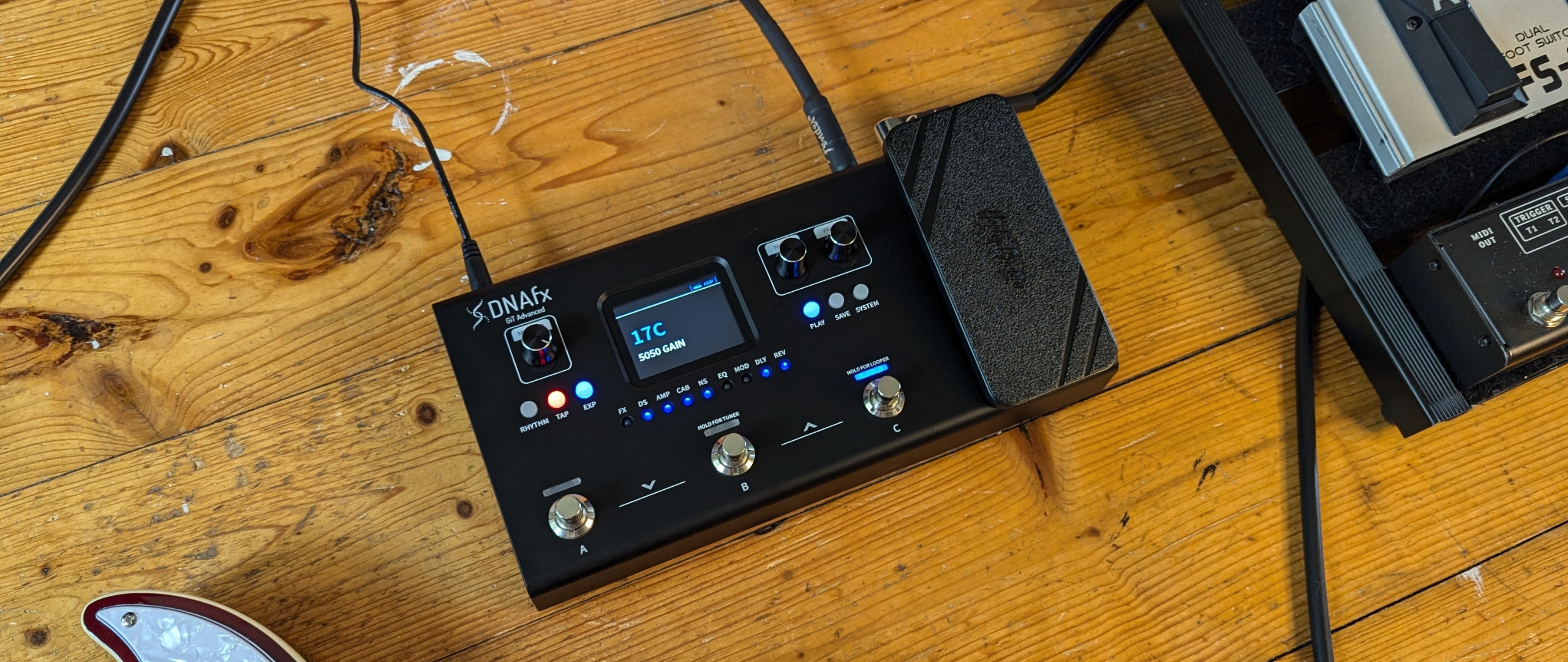MusicRadar Verdict
Overall the sounds on the Harley Benton DNAfx GiT Advanced are really good and it’s jam-packed full of features, but ultimately it’s let down by some operational failings. It’s impossible to ignore the delay when switching patches, a flaw that really hurts an otherwise excellent budget multi-effects pedal.
Pros
- +
Super easy to use
- +
Lots of great sounds
- +
Fantastic effects selection
- +
Built-in looper with rhythms
Cons
- -
Delay when switching patches
- -
Presets need a lot of tweaking
MusicRadar's got your back
We guitarists are really spoiled for choice when it comes to multi-effects pedals nowadays. Even in the sub £300 range, there’s a huge amount of choice and many share features with your more advanced QCs and Helixes such as advanced modelling functions and 3rd-party IR support.
Harley Benton’s challenger to the budget multi-effects market comes in the form of the catchily named DNAfx GiT range, which features three tiers of units starting with the DNAfx GiT, then on to today’s subject, the Harley Benton DNAfx GiT Advanced, before the top-tier model arrives in the DNAfx GT Pro. In our DNAfx GiT Pro review we praised the unit for its amp and effects model accuracy, but bemoaned the lag when switching effects, something we’re certainly hoping has been fixed here.
There’s a lot of competition at this price point when it comes to multi-effects, with offerings from NUX, Mooer, Zoom, and Hotone all competing for your attention. Each makes a great case for use whether you’re a beginner or looking for something good value for your live rig. Let's find out what makes Harley Benton’s offering different from the rest.
Harley Benton DNAfx GiT Advanced review: Features
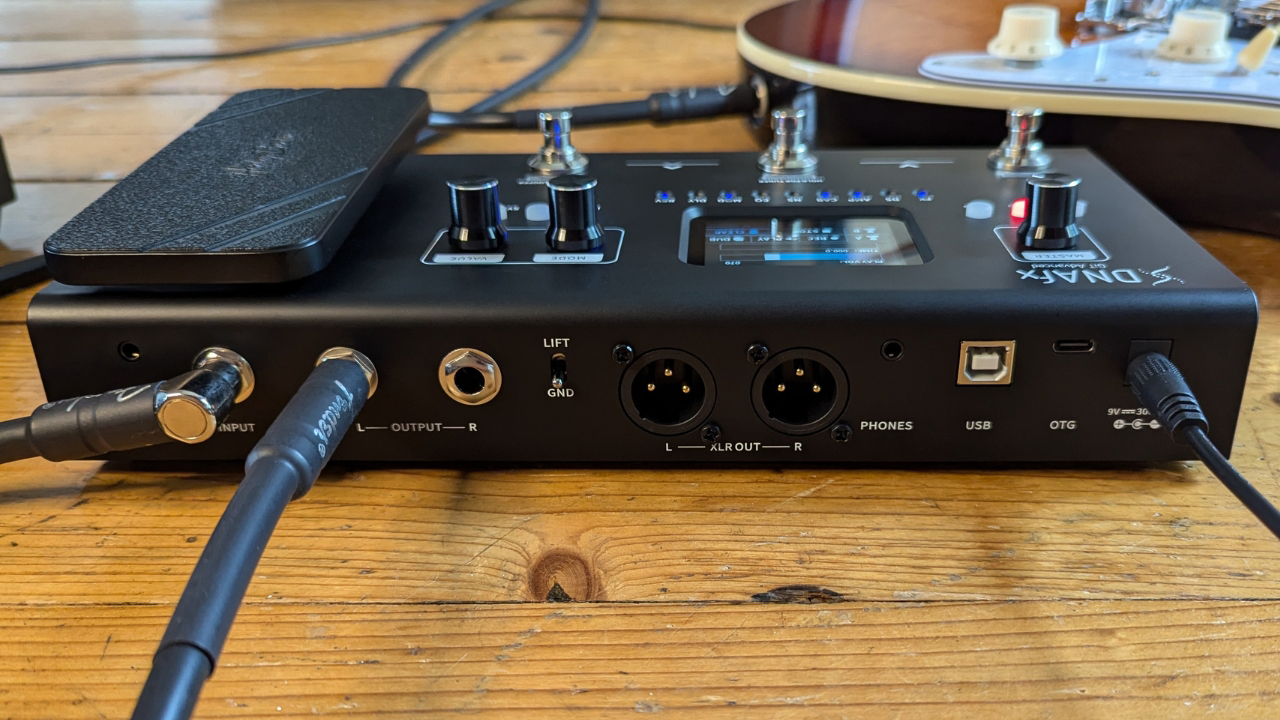
The DNAfx GiT Advanced is packing a hefty 55 guitar and bass amp models, which should be plenty enough to cover all those clean sounds and high-gain metal tones. It’s got 26 guitar and bass cabinet impulse responses too, with support for uploading your own 3rd party IRs.
151 effects cover everything from compressors, EQs, and noise gates through to more creative effects like overdrive, distortion, reverb, delays, and modulation. It also has an 80-second looper for practising and songwriting, as well as a drum machine with 40 different patterns to let you jam by yourself.
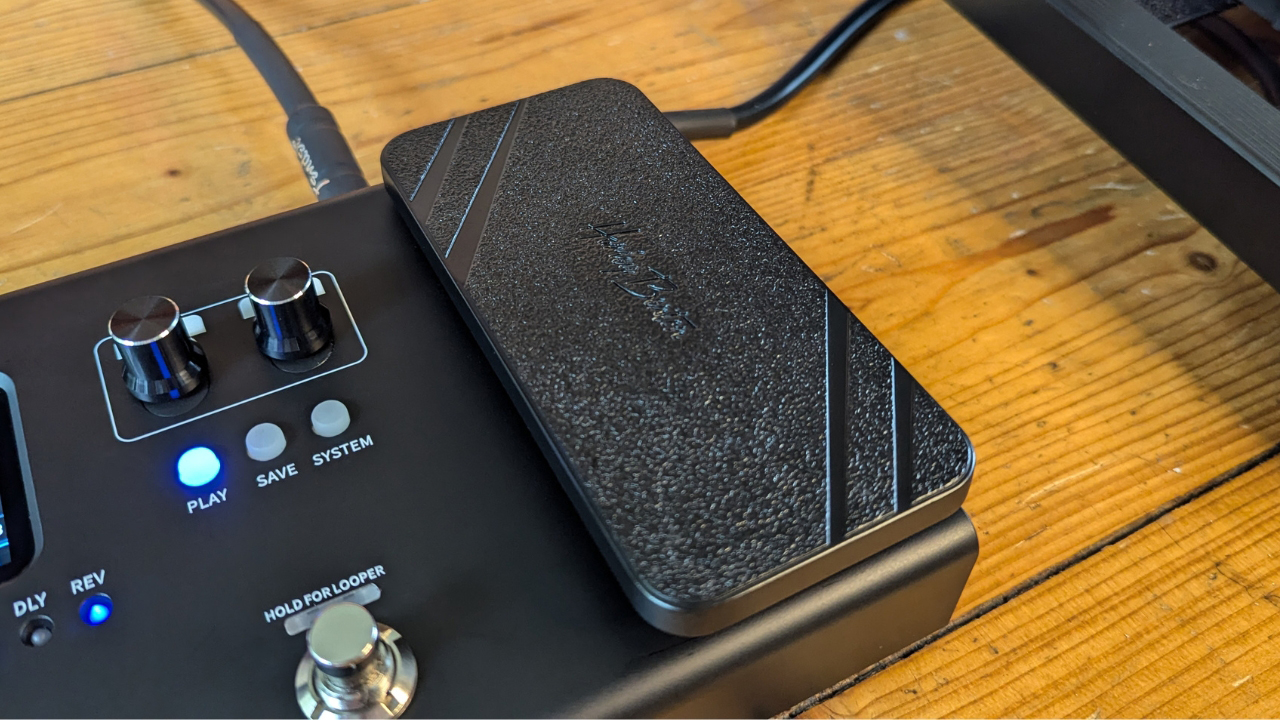
On the physical side, you’ve got an expression pedal with three footswitches for control. These allow you to switch between presets, access your tuner and looper, and offer a tap tempo function. It has a relatively sparse offering of buttons and knobs, with just three knobs and six buttons on the ABS/aluminium chassis.
In terms of connectivity, you’ve got a single input for your guitar, stereo 1/4-inch outputs, and unusually for a multi-fx at this price point, dual XLR-outs too. A 1/8-inch headphone out allows for silent practice alongside a USB-B output for connecting to your computer. The ‘OTG’ connection is designed to connect the pedal to your phone or tablet, letting you record your guitar direct and create guitar videos for YouTube or social media quickly and easily.
Want all the hottest music and gear news, reviews, deals, features and more, direct to your inbox? Sign up here.
Harley Benton DNAfx GiT Advanced review: Usability

There’s no UK adapter included in the box, but thankfully I had a converter from a previously purchased Harley Benton pedalboard power supply that I was able to use to get up and running. Something to note if you’re purchasing from the UK. It’s easy to start playing too, and I didn’t need to dive into the manual to start getting some sounds out of it.
Each bank has three settings to choose from, and the first two banks are laid out in a logical way, starting with a clean base tone that gets progressively dirtier as you change settings. After the first two banks, things get pretty random, mixing high-gain metal tones with more atmospheric post-rock patches, and tremolo laded clean tones. It feels like a bit of a lottery once you move deeper into the presets, and I feel most guitarists will want to make a lot of changes here.
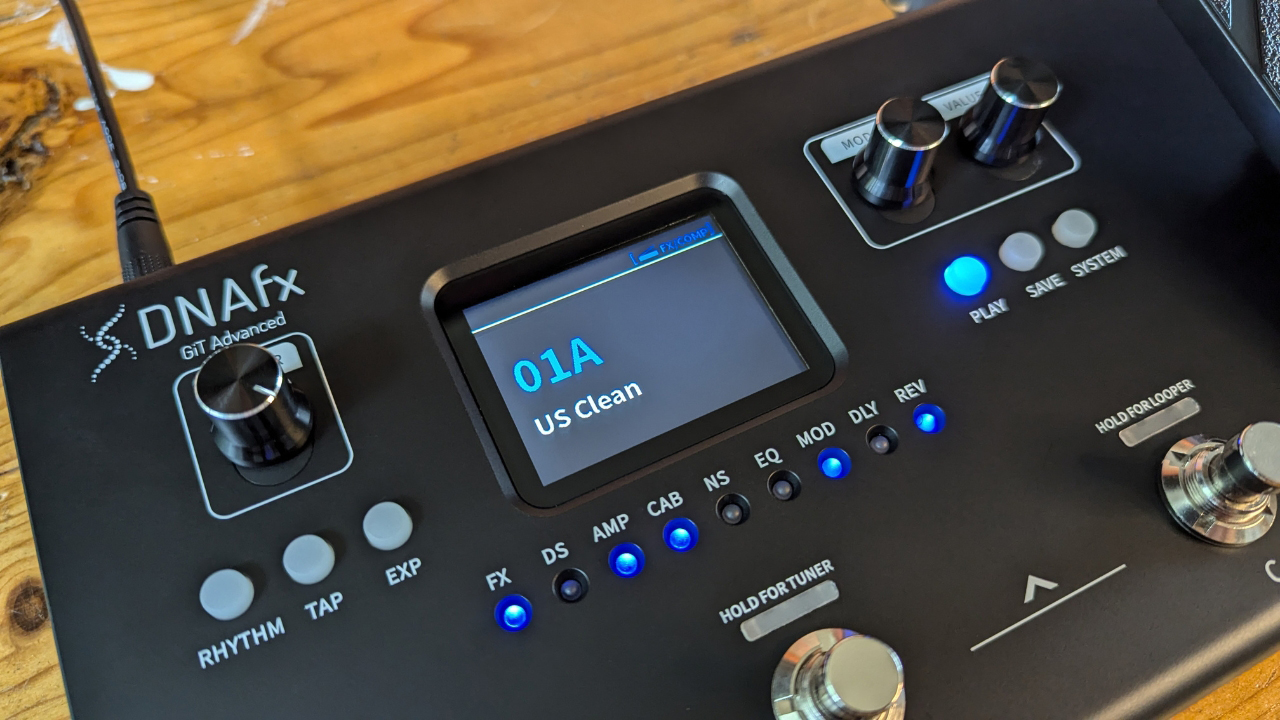
The display is simple but very clear, and below are individual LEDs for each part of the signal chain to let you know what a patch contains. The mode knob allows you to deep dive into each part of the signal chain, adjusting settings within each component very easily. There’s no changing of the order available, but that’s expected at this price point.
Unfortunately, the previous issue we had with the DNAfx GiT Pro still exists here - there’s a perceptible delay when switching between presets. This makes using it as part of your live rig a straight no, as you can’t instantaneously switch between patches. The delay isn’t slight either, feeling like almost half a second. It’s not likely to affect those playing at home too much, but it’s disappointing that this seems to be inherent in both the pedals we’ve reviewed in the series.
I also found the bank switching to be awkward, especially if playing without shoes. To do this you need to press two of the footswitches together, the problem being they’re spaced quite far apart. This means you need wide shoes on, or you have to awkwardly twist your foot to stomp on the two switches simultaneously. For reference, I’m a UK size 9 with fairly wide feet, so it’s not like I wear dainty clogs when I’m playing either.
Harley Benton DNAfx GiT Advanced review: Sounds
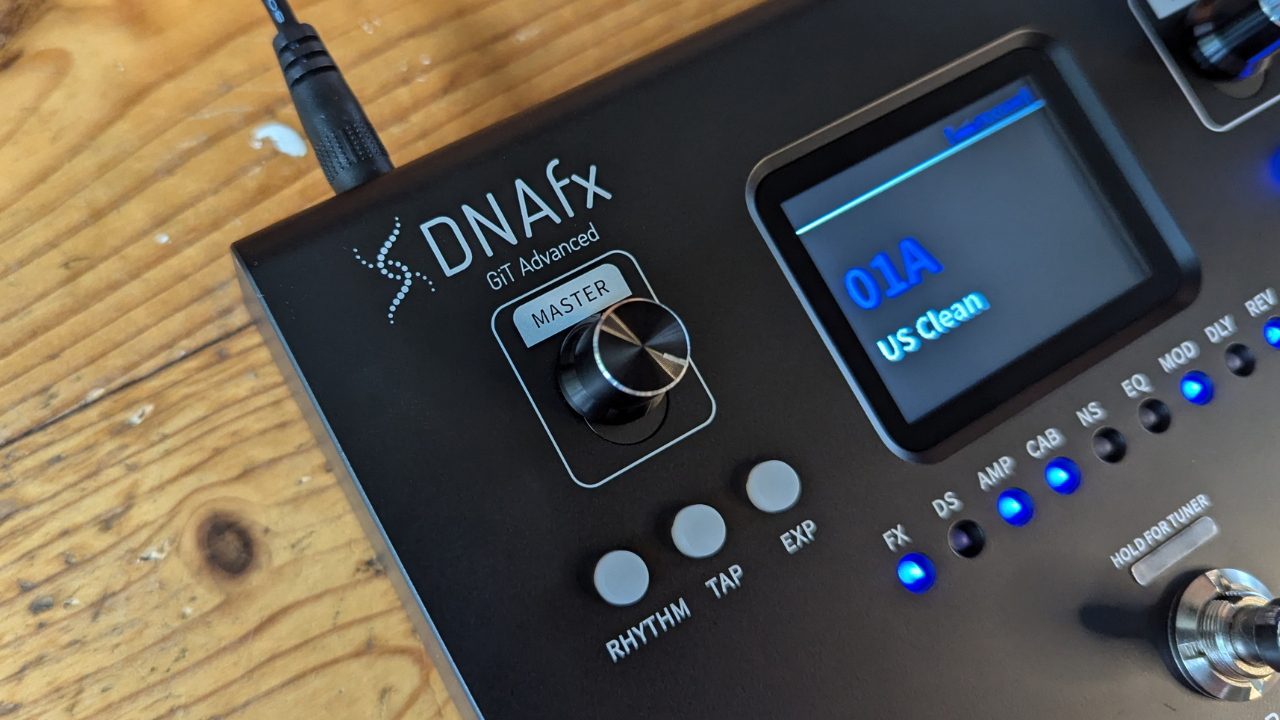
The sounds vary massively when it comes to the presets on this pedal. When they’re good, they’re really good, but many are just plain bad too. That’s not to say that the amp and effects models are objectively bad, just that you’ll have to tweak the existing presets or create your own to get the best out of it. For instance, once I changed the amp EQ settings on a particular high-gain patch and dialled back the delay mix, I found a much more usable tone to move forward from.
If you have your own impulse responses then you’ll definitely want to load them up. While the ones that come with the pedal are good, when I loaded my York Audio IRs onto the pedal I found there was a significant improvement in the overall sound quality. For those who don’t have these available, you’ll still be able to get great sounds out of the pedal but you’ll need to tweak the mics and mic position to get a sound that works for you.

I particularly enjoyed the clean tones on the DNAfx GiT Advanced, finding them to be a touch more realistic than the high-gain sounds at the other end of the spectrum. It’s a typical complaint at the cheaper end of the modelling pedal market, where more gain-y tones lack the harmonic depth the real thing or more advanced amp modellers are capable of delivering.
There are some fantastic effects to play with too, particularly the reverbs and delays. You can get some surprisingly creative tones despite the inability to shift the pedal order around. It’ll definitely let you create some huge ambient soundscapes if that’s what you're into, and I found the overall quality of effects to be really good considering the amount of money you’re paying.
Harley Benton DNAfx GiT Advanced review: Final verdict
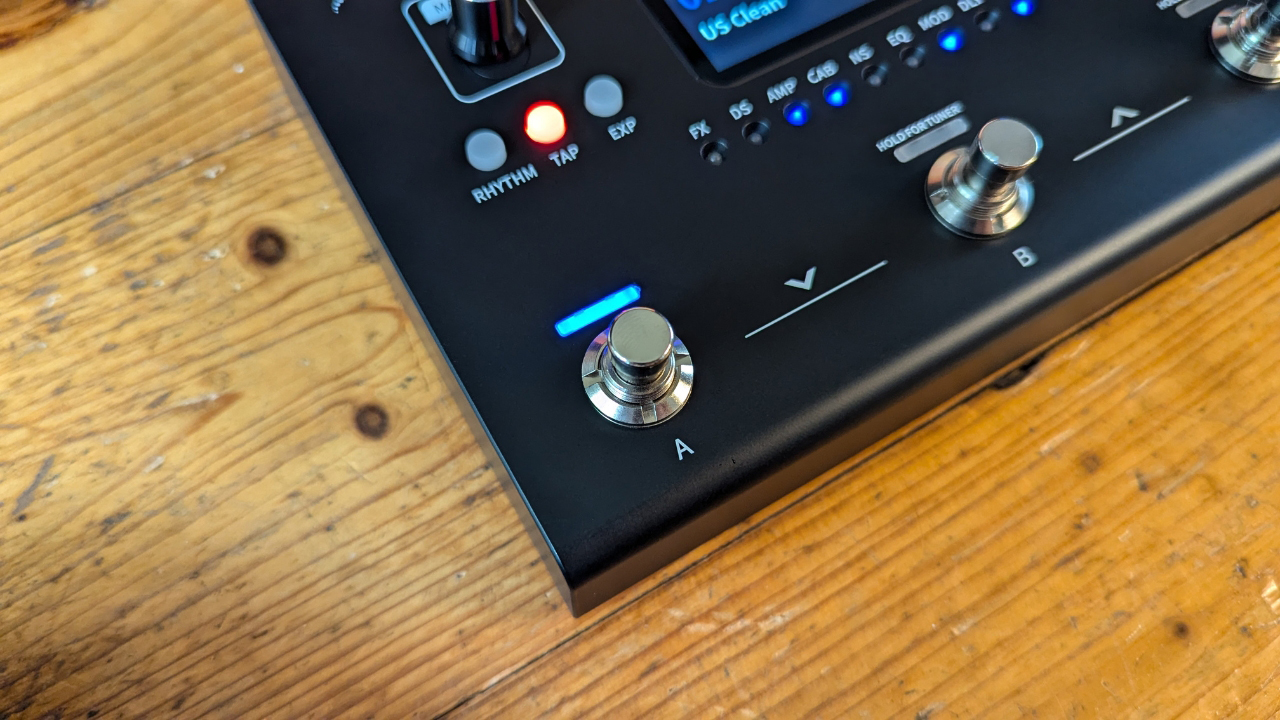
The Harley Benton DNAfx GiT Advanced is overall a great pedal considering the amount of money you’ll be spending. At less than £/$200, it’s a great option for beginner players or those looking to expand their tonal palette on a budget.
It won’t suit those who are playing live though, due to that inherent delay when switching patches. Hopefully, it’s something that could be addressed in a firmware update, but it ultimately stops a good pedal from becoming great.
Harley Benton DNAfx GiT Advanced review: Specs
- Price: $175 / £159 / €188
- Type: Amp modeler and multi-effects
- Key features: 55 amp models, 25 cabs, 151 effects, expression pedal, looper
- Connections: 1 x 1/4-inch input, 2 x 1/4-inch outputs, 2 x XLR outputs, 1 x 1/8-inch headphones, USB-B out, USB-C out
- Contact: Harley Benton

Matt is a Junior Deals Writer here at MusicRadar. He regularly tests and reviews music gear with a focus on audio interfaces, studio headphones, studio monitors, and pretty much anything else recording-related. Matt worked in music retail for 5 years at Dawsons Music and Northwest Guitars and has written for various music sites including Guitar World, Guitar Player, Guitar.com, Ultimate Guitar, and Thomann’s t.blog. A regularly gigging guitarist with over 20 years of experience playing live and producing bands, he's also an alumnus of Spirit Studios, where he studied studio engineering and music production.
